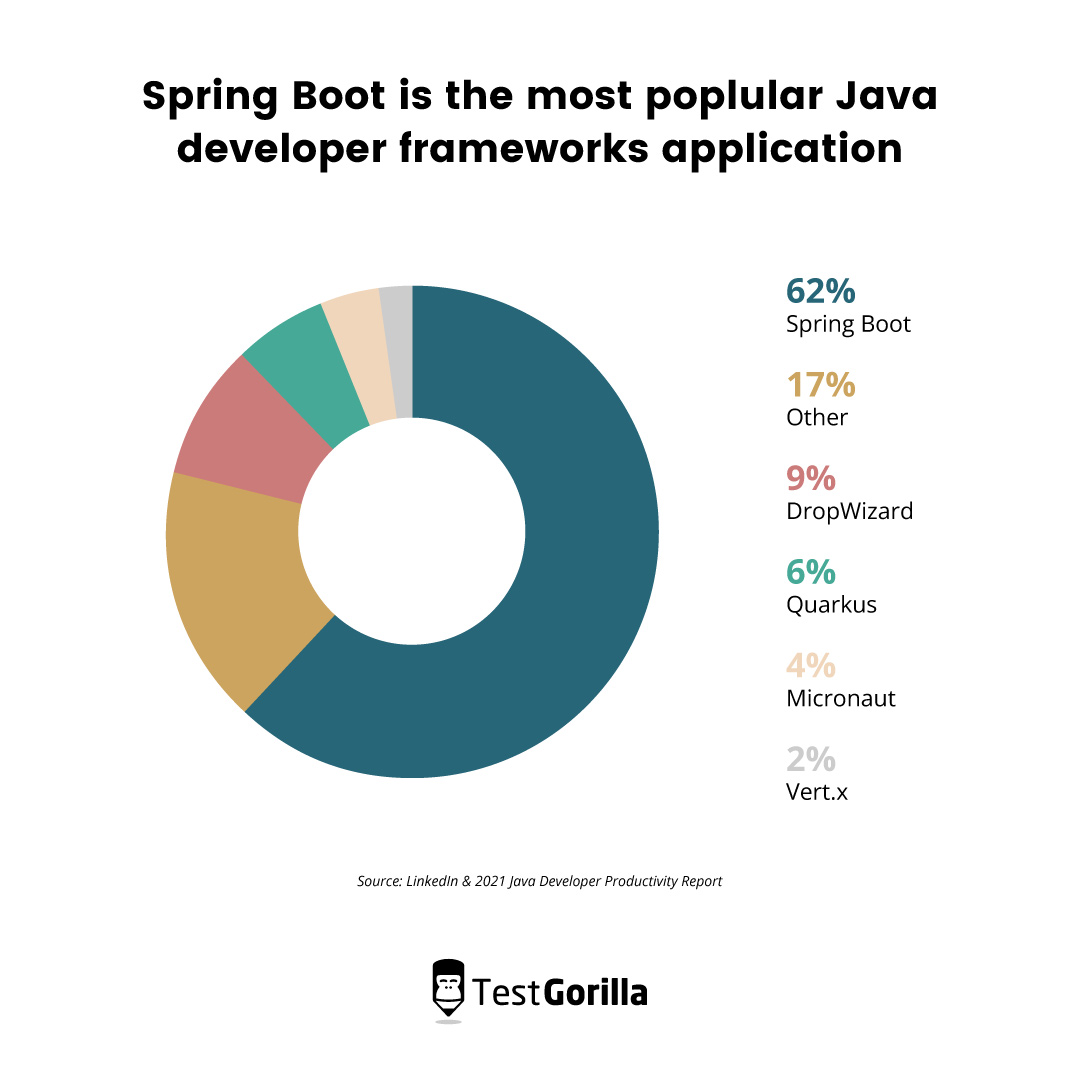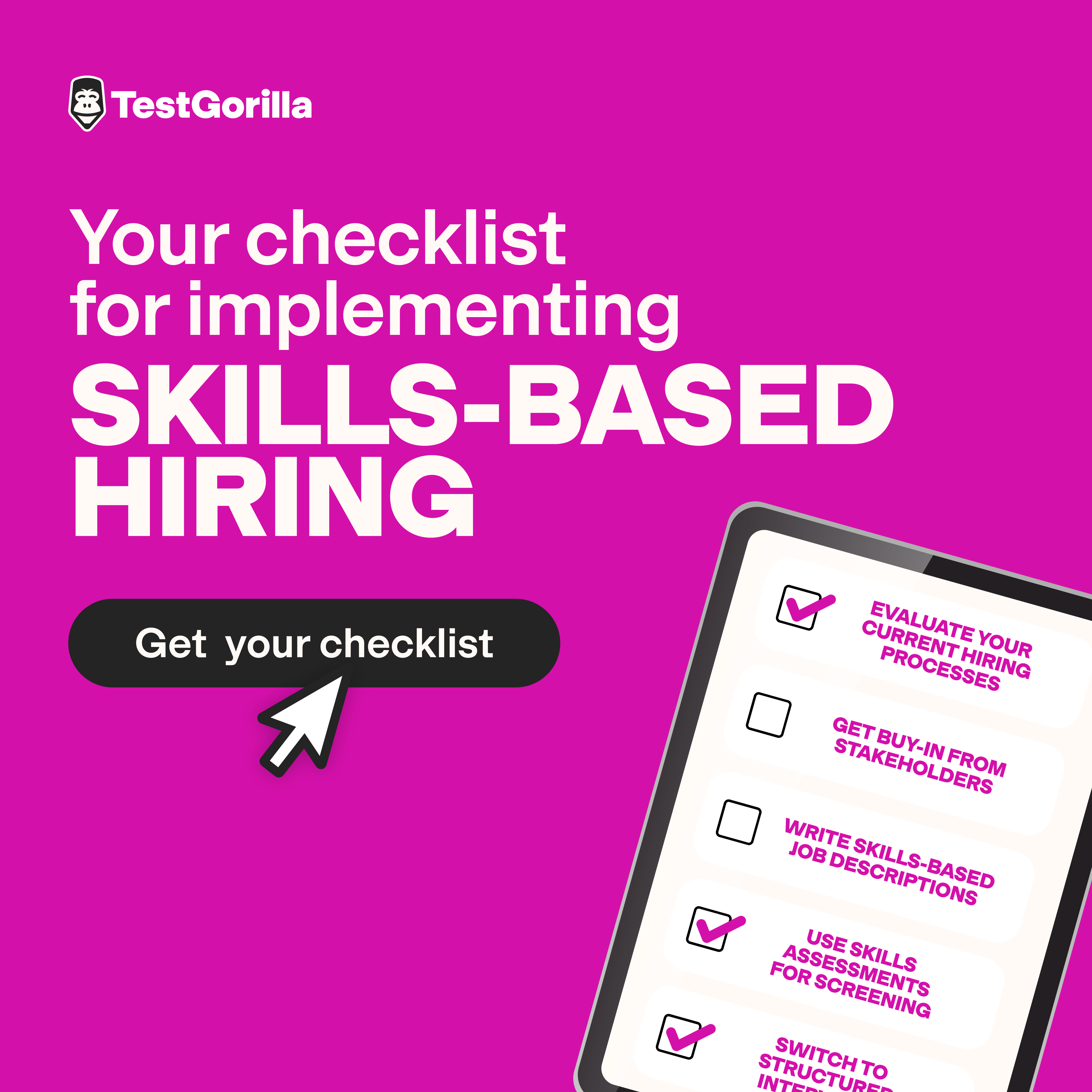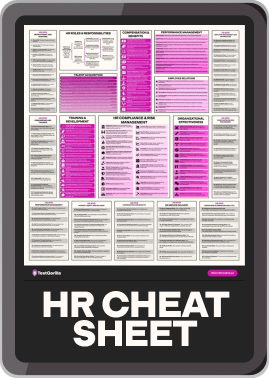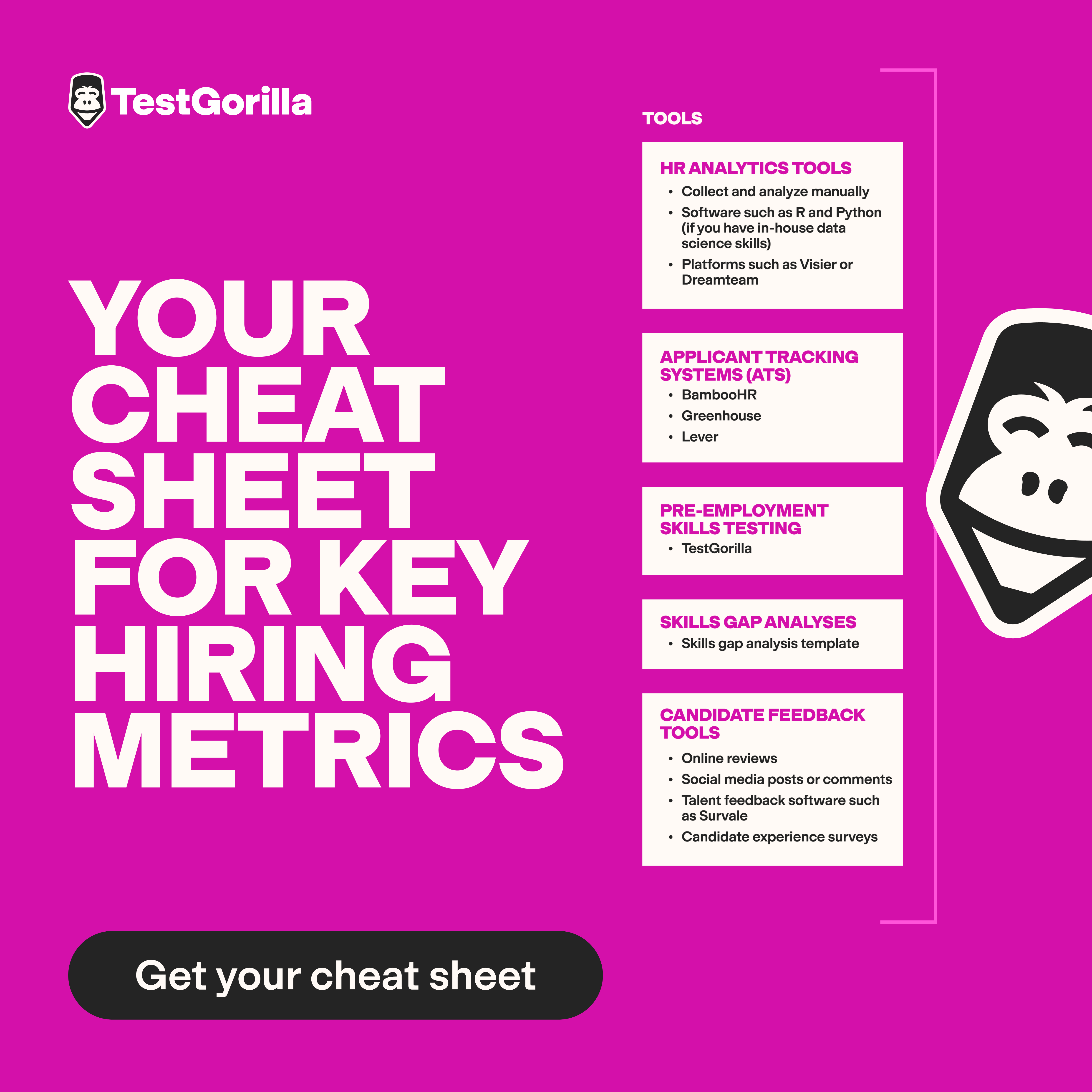25 Java developer interview questions for evaluating candidates
If you’re hiring a Java developer, it’s worth considering their many duties. Java developers must not only complete technical programming projects but also collaborate and share their ideas with team members. These responsibilities require both soft and hard skills to achieve good results.
With these duties and skills in mind, the easiest way to hire someone is to review their abilities and experience using skills assessments. Create an assessment that includes our Java skills test to quickly learn more about your candidates’ skills.
After you’ve narrowed down your candidate pool with coding tests, it’s time to proceed to the interview stage. To prepare for this process, choose from the 25 Java developer interview questions and sample answers we’ve put together below.
25 Java interview questions about skills and technical knowledge
We’ve included a sample answer for every Java interview question we’ve gathered so that you know what the best responses are. Ask candidates some of these questions, and compare their responses with the sample answers for a more straightforward hiring process.
1. Can you name four main features of the Java programming language?
As of 2023, Java is the second-most popular programming language, likely because of its many handy features. Applicants with Java experience should know four main features and be able to describe their importance. Here are some of the features they may mention:
Platform independent: Java does not depend on specific operating systems to execute code
Secure: The language uses bytecode and exception handling, which enhance its security
Easy to use: Java is relatively easy to learn and operate, and its syntax is similar to that of other popular programming languages like C++, making it familiar to many developers
Dynamic: Java supports dynamic class loading, so the classes load programmatically at runtime
2. How would you rate your Java debugging skills?
Java debugging is a must-have skill for software developers who use Java. It helps them spot bugs that don’t immediately appear in code reviews. Candidates should have experience with Java debugging and understand how to spot syntax, runtime, and logic errors in code.
Listen out for answers that show that candidates understand why Java debugging is important. They should also discuss their Java debugging experience when responding to this question. If you need a quick way to review their expertise, consider using our Java debugging skills test.
3. What do you understand about the main() method in Java?
In response to this Java developer interview question, candidates should explain that the main() method is the entry point for a Java program. Every Java application has a main() method, and it is the first method called when the program starts.
This method then calls all other methods in the program as it is executed line by line. Execution is ended after this method is completed.
4. Do you understand what the PATH variable is? Can you explain what it does?
The PATH environment variable is used to locate executables from the terminal window or command line. Candidates should know that when they first install Java, they should add a directory location to the PATH variable. Developers can set up environment variables using the system utility option in the Windows control panel or Linux shell startup file.
5. Do you understand what the CLASSPATH variable is? Can you explain what it does?
The CLASSPATH environment variable tells applications where to search for Java class files. Developers can specify class paths with the -cp command-line switch, which enables them to set the path individually and avoid affecting other applications.
6. How would you rate your Spring framework knowledge?
Spring framework knowledge is essential for applicants because Spring offers infrastructure support to developers creating Java applications. It’s also popular – 62% of developers use Spring Boot as their primary framework technology.
To prove their expertise, candidates might explain that the framework uses plain old Java objects (POJOs) to create high-performing apps. They could also name some examples of applications they created using Spring and Java.
Check out our Spring skills test to evaluate your candidates’ knowledge and determine if their skills match your expectations.
7. Can you explain the difference between the PATH and CLASSPATH variables?
PATH and CLASSPATH are both environment variables. The operating system uses PATH to locate executable files, whereas the Java Virtual Machine (JVM) uses CLASSPATH to locate Java class files.PATH specifies the directories in which executables are located. CLASSPATH, on the other hand, specifies the directories and JAR files in which Java classes are located.
8. Tell us what you understand about the final keyword in Java.
The final keyword is a non-access modifier used in Java to indicate that a variable, method, or class can only be assigned once and cannot be changed or extended. For instance, developers cannot extend a string variable with the final keyword. Here are a few characteristics of final that candidates may describe:
Methods declared with the final keyword cannot be overridden
The final keyword can improve performance by helping the Java compiler to optimize code
Developers can use the final keyword to improve the app’s security by preventing malicious code from modifying sensitive data, such as passwords
9. What do you know about access modifiers? Can you name and explain all four?
Experienced applicants will understand that access modifiers are keywords developers use to set up class and method accessibility in Java. When they respond to this Java developer interview question, they should explain the four access modifiers as follows:
public: This access modifier allows access to methods, variables, and classes from any part of the program.
private: This access modifier only allows access to classes, methods, and variables from within the same class.
default: This is the default access modifier when no access modifier is specified. It allows access to a class, method, or variable only from within the same package.
protected: This access modifier allows access to classes, methods, and variables from within the same package or a subclass in a different package.
10. Can you explain what static import is in Java?
The static import feature in Java gives developers direct access to static members of a class without needing to qualify them with the class name.
Applicants should also know that static import has some key advantages when used correctly – for example, it can make code more concise and cuts down on the repetition of class names.
11. Do you know what enum is in Java? Please give us a definition.
In Java, enum is a data type that represents a set of predefined constant values. To show their experience with Java, candidates can also explain that the enum type’s values must use uppercase letters and that developers can define the type using the enum keyword. Look for answers that explain that developers should use enum whenever they need to represent a fixed set of constants, such as the days of the week.
12. Can you tell us what composition is in Java?
Composition is a design technique in Java that developers use to implement a “has-a” relationship for classes. Developers implement it in an object-oriented programming (OOP) context by using other objects’ instance variables, enabling the containing object to use the methods and data of contained objects to perform its own operations.
To dig deeper into your candidates’ knowledge, you can also ask about the advantages of composition in Java.
The best applicants will know that this technique helps developers reuse code and complete unit testing. It makes this work easier because developers already understand the methods from another class.
13. How would your engineering manager rate your OOP knowledge?
OOP knowledge is the foundation of many programming languages, so it’s critical for your candidates to have this skill. In the context of Java, OOP involves programming with objects, which contain data and methods that operate on that data.Your candidates’ answers to this Java developer interview question should include some advantages of OOP, such as the following:
Its modular nature facilitates troubleshooting
It enables developers to reuse code with inheritance
It makes collaborative development easier and more secure with encapsulation
Do you need a way to assess your candidates’ OOP knowledge? Include our Object Oriented Programming test in your skills assessment to quickly and comprehensively evaluate this skill.
14. Tell us what you understand about the Java marker interface.
Applicants with advanced Java knowledge will have no difficulty explaining that a marker interface is an interface that does not declare any methods, fields, or constants.
This design pattern provides runtime information about objects in Java. Developers use it to add metadata to a class despite the language’s lack of inherent support for this.
15. Can you explain the main difference between daemon and user threads?
Daemon threads run in the background and are used for tasks that don’t require continuous operation, such as completing signal dispatches and garbage collection. They can also be used to remove cache entries that developers no longer want. User threads are high-priority threads that execute code written by the developer. The JVM will not exit until user threads have finished running their tasks.
Don’t forget to ask follow-up Java developer interview questions such as “What is your experience with threads in Java?” to learn more about their knowledge.
16. What do you understand about Java’s CountDownLatch?
CountDownLatch refers to a synchronization tool in Java. Candidates should know that this tool enables threads to wait until other threads complete their operations. It creates a queue for the threads. When the countdown reaches zero, the thread at the top starts.
Listen out for responses that mention that developers use the countdown() method to use CountDownLatch.
17. How would your team members rate your communication skills?
Smooth communication is crucial in any role, including Java developer positions. You need to know whether candidates have the written and communication skills needed to collaborate with teams, non-technical stakeholders, and clients. You should always ask for examples of your candidates’ communication skills.
For instance, applicants might discuss complex ideas in team-synchronized video conference meetings or one-on-one discussions.
Checking if they can communicate effectively during these meetings is essential, as is finding out if these discussions had successful outcomes. This information will help you learn about your candidates’ communication styles. You can also use our Communication skills test to review candidates’ communication abilities.
18. What do you understand about the CAS algorithm?
CAS means “compare and swap.” This technique helps developers achieve multithreading synchronization. If your candidates understand this algorithm, they’ll know it works by checking the memory’s content, comparing a given value with the memory, and modifying it according to a new value.
Top developers may also know that CAS algorithms only execute if the given value is the same as the memory location.
19. Do you understand what the volatile keyword does in Java?
The volatile keyword indicates that a variable should be read from main memory rather than a thread’s local cache. It is used to ensure the visibility and atomicity of a given variable across all threads.
Looking for a more in-depth answer? Consider if your candidates know that developers can use a volatile keyword with objects and primitive data types, such as byte, int, and boolean.
20. Can you explain what the util.Timer class is and name some of its methods?
With the Java util.timer class, developers can schedule tasks to be performed at specified intervals or points in time. One example of a task that this class can schedule is running a block of code after a specific time. Knowledgeable applicants will have no problem describing a few of the util.timer class’s methods. For example, they might mention that java.util.Timer.cancel() terminates the timer and discards any scheduled tasks. Meanwhile, java.util.Timer.purge() removes every canceled task from the queue.
21. Can you tell us what OutOfMemoryError is in Java and how you would fix it?
OutOfMemoryError is a runtime error that occurs when the JVM cannot allocate memory to an object because of a lack of heap memory. Ideal candidates with sufficient knowledge will know that increasing the maximum heap size is a common way to fix this error.
They might also explain that the Java garbage collector can automatically reclaim heap space to allocated objects that are no longer needed.
22. Should Java developers use empty catch blocks? Why or why not?
Although it’s possible to use empty catch blocks, your candidates should know it’s not the ideal way to program an application. Empty catch blocks that catch exceptions won’t give developers any information about them, making it difficult to debug the app.
Instead of using empty catch blocks, programmers should ensure they have a log statement file and use this to log every exception detail.
23. Can you explain what the Java database API is? When should developers use it?
Candidates responding to this Java developer interview question should explain that this API gives programmers universal data access. Developers use this tool to establish a database connection, execute and run SQL queries, and retrieve results from a database. If you’re looking for a more in-depth answer, ask follow-up questions about the advantages of the Java database API. Consider if your applicants know that this tool can:
Make databases transferable without any application code modifications
Facilitate deployment and make program maintenance more economical
24. How many Java database drivers are there? Can you name two?
Advanced Java developers know not only what Java database drivers are but also how many there are. Ideal candidates will explain that there are four drivers in total and be able to name two examples, such as the following:
Native API: a driver that converts Java database classes to the client API
Direct-to-database driver: a driver that sends Java database calls to a network protocol
25. What do you understand about ResultSet in Java?
ResultSet is an interface in Java that represents the results of a database query. It contains rows that match the query’s conditions.
Applicants who are keen to show their expertise may also mention that ResultSet provides methods for retrieving and manipulating the results of queries. For example, ResultSet.next() moves the cursor to the next row in a ResultSet object.
For which roles can you use Java developer interview questions?
When hiring Java developers with mid-level or advanced experience, you can use these Java developer interview questions to learn more about their skills. Some of these questions are also ideal for Java programmers with experience working with databases – others can help you hire programmers who have Spring framework knowledge.
Select from our list of questions to quickly assess your candidates.
The best insights on HR and recruitment, delivered to your inbox.
Biweekly updates. No spam. Unsubscribe any time.
When should you use Java developer interview questions in the hiring process?
It’s best to wait to start the interview phase until you’ve asked candidates to complete skills assessments and received their test results. Skills assessments are ideal for creating a shortlist of applicants, so you should complete this step first.
With TestGorilla, you can simply look at the star ratings and percentages shown in the results to check which applicants suit your requirements. Then, invite them for an interview, where you can ask the Java developer interview questions in your list. Hint: If you need to assess candidates’ Java 8 skills, use our Java 8 interview questions.
Hire programmers with Java developer interview questions
With skills tests for Java developers and interview questions, nothing’s blocking your path to easy hiring now. TestGorilla has the perfect programming skills tests, such as our Java (Coding): Entry-Level Algorithms test, to help you find a pro.
Are you looking for more information on TestGorilla? See how our product works by trying it for yourself at no cost, learn about the science behind skills assessments, and join the thousands of companies that use our assessments for simple, efficient hiring.
Related posts
You've scrolled this far
Why not try TestGorilla for free, and see what happens when you put skills first.















